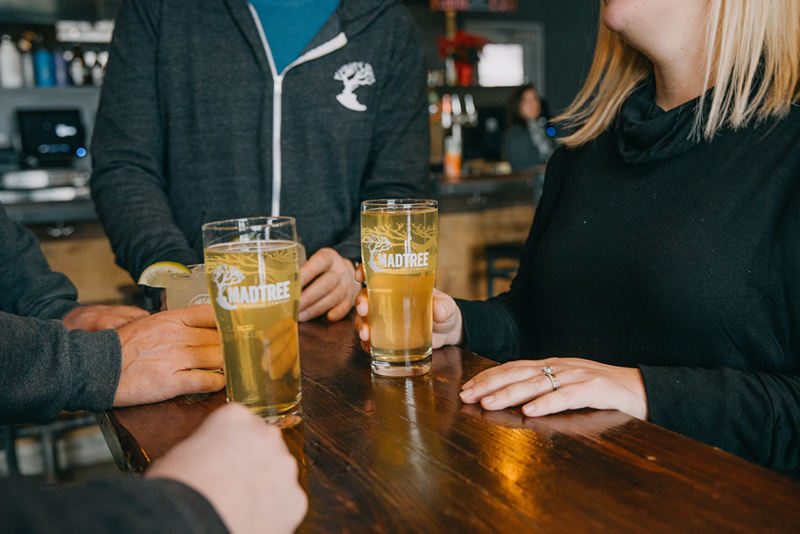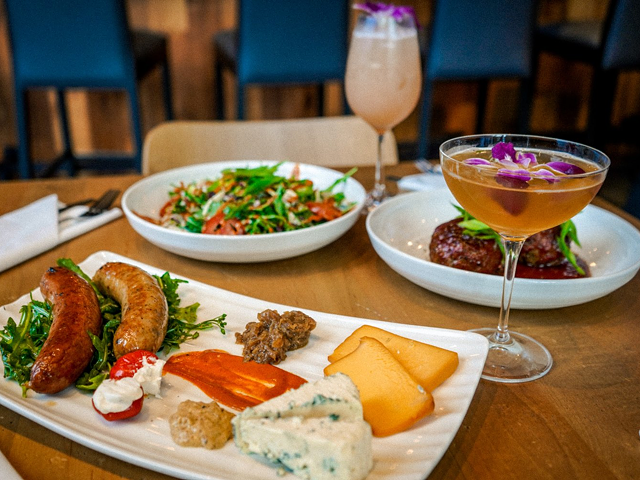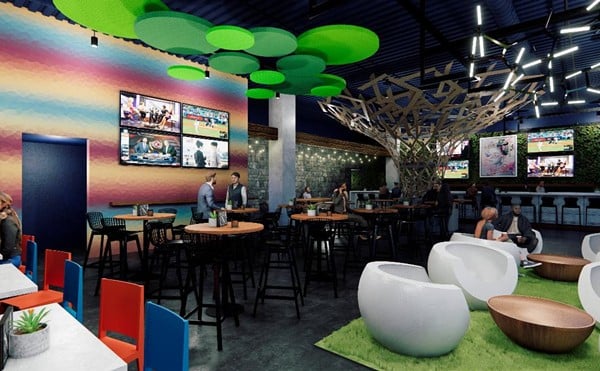Autumn is harvest season, which means apple orchards are in full swing this time of year. As a result, you’ll see a lot of apple cider for sale. But people have differing views as to what apple cider actually is.
Apple cider is traditionally a fermented alcoholic beverage. In America, some call it “hard cider,” and if you were to search American cookbooks for an apple cider recipe, nine out of 10 times you’d be directed to make a kind of spiced apple punch with stewed fruits — the type typically served around Halloween.
In Europe, where the drink has ancient roots, if you ask for cider at a pub or café, it’ll be a crisp, light yellow drink that contains the alcoholic equivalent of beer, if not a bit higher.
This alcohol won’t come from the addition of spirits like whiskey or brandy to apple juice (another method of apple cider preparation in American homes) as the alcohol in traditional cider is fermented from apple juice’s natural sugars.
Order cider in a Cincinnati bar or restaurant and you’re likely to be served a Rhinegeist. Just as the brewery has established a huge presence in the region’s craft beer scene, Cidergeist, Rhinegeist’s cider alter-ego, has a proportionally strong hold on local cider options.
“We like cider — it’s like an extra area for us to play around and to explore,” says Chris Shields, Rhinegeist’s director of education. “It’s a fun challenge for our brewers. We don’t have any sort of dedicated cider staff. Our production team handles everything, so it keeps them really versatile and creative.”
Rhinegeist currently offers two ciders throughout the year: Semi-Dry, a tart and slightly sweet drink that fits in nicely with more traditional ciders; and Swizzle, a more adventurous and complex cider flavored with ginger and lemongrass.
Shields said he’s happy with the reception these ciders have had, though cider accounts for a small percentage of Rhinegeist sales. However, since they sell such a large quantity of beer, that means they still produce a lot of cider, including a couple of draft-only variations (like an Elderflower pear and Botanical gin-like cider). To keep up with demand, Rhinegeist buys apple juice from Washington state.
“We look at our ciders as one more option. Are we grabbing wine and cider-drinkers and bringing them into our community? I hope so,” Shields says.
One drink on Rhinegeist’s menu that is often misidentified as cider is Bubbles, a rosé ale. Cider is legally distinguished as wine, so Rhinegeist had to acquire a wine license to produce their ciders. Wine is taxed in part according to its level of carbonation: the more bubbly, the higher the tax. (This is one reason champagne and other sparkling wines are often more expensive than still wines.)
The recipe for Bubbles rosé ale was made to be designated as a fruited ale rather than a cider, despite being made with fruit juices and no malts or hops. Shields explains that the taxation would be too high for the level of carbonation to make it a traditional cider, thus “fruited ale” was their way of crafting the drink they wanted without sacrificing carbonation. Cider fans will likely still enjoy Bubbles.
A rising tide of beer and cider lifts all breweries. Other local spots that have ciders include MadTree, March First and Braxton Brewing Co., to name a few.
“We love that MadTree has a cider the same way that we love how PsycHOPathy is a great beer,” Shields says. “If someone’s never had an IPA and they go to MadTree and try PsycHOPathy, they’re more likely to next try (Rhinegeist’s) Truth.”
MadTree introduced its 42 Mile cider last year — a partnership with Southern Indiana’s Beiersdorfer Orchard, located 42 miles away from the taproom.
“When we set out to make a hard cider, it was really important for us to know where the fruit came from and who the farmer was that grew it,” said MadTree head brewer Ryan Blevins, at the time. “Once I visited the Beiersdorfer farm and talked with (orchard general manager) Jeremy, I knew his apple cider would be the right base to make a quality, delicious hard cider that we’d be proud of to represent MadTree.”
It balances sweet and dry and meets FDA guidelines for being gluten-free. It’s a taproom exclusive.
March First offers a wide variety of ciders, made with Ohio-grown apples — they even brand themselves as a brewery, distillery and cidery. They have a traditional flavor, a dry-limed flavor infused with lime peel and a collaboration with Holtman’s Donuts that’s supposed to taste like apple fritters, made with cinnamon, ginger and allspice. The Apple Fritter Cider is their fall flavor to replace the ubiquitous pumpkin spice. And they just released a Lemonade Cider to celebrate the end of summer.
Since 2018, Braxton has been offering two different ciders: Kickback and Kickback Rosé. Braxton’s brewmaster Richard Dubé, a 35-year industry veteran, worked at the Boston Beer Company before making his way to Covington and brought with him his cider-making experience. That was applied to Kickback, crafted with McIntosh apples for a slightly sweet hard cider. The rosé version adds an “extra layer of aroma and flavor in a bright, beautiful pink hue,” according to Braxton.
In addition to those options, Fifty West’s Production Works has a dry cider on tap; the Listermann Fermatorium generally has a creative cider concoction on offer — a mixed berry or pear or something similar; and HighGrain Brewing in Silverton is fermenting a cranberry-apple cider. Wooden Cask in Newport is also pouring WC Cider, a semi-dry with a “sweet apple aroma and a crisp, refreshing finish.”
Rest assured, if you’re looking for a cider alternative at a local taproom, there are plenty of options to choose from.
Contact Sean M. Peters: [email protected]






